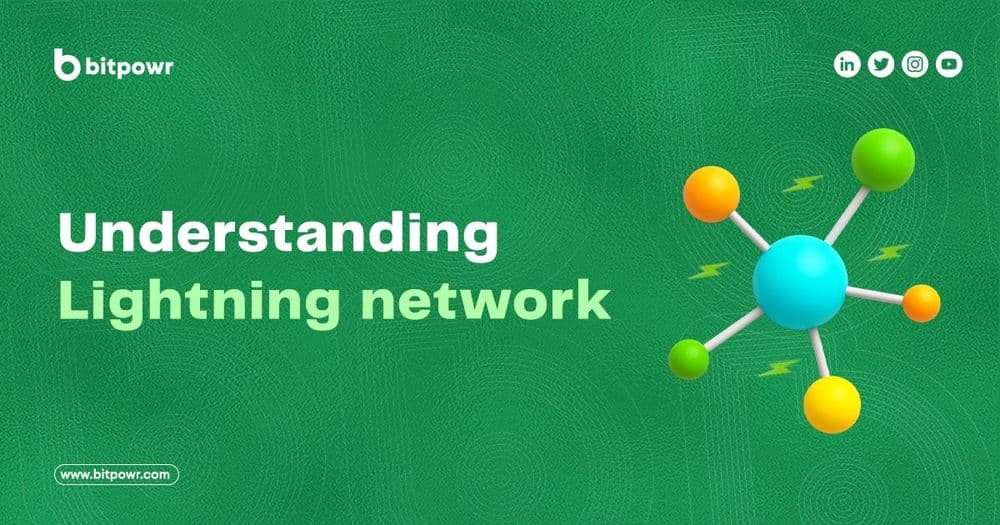In 2015, researchers Thaddeus Dryja and Joseph Poon proposed the Lightning Network in a paper titled “The Bitcoin Lightning Network ” Their writings were based on previous discussions by Satoshi Nakamoto. These conversations described how payment channels could help facilitate payments between parties. Below we will look at what exactly lightning network is and what it solves.
What is a lightning Network
The Lightning Network is a decentralized system for instant, high-volume micropayments that remove the risk of delegating custody of funds to trusted third parties.
What does Lightening Network solve?
It is one of the first implementations of a multi-party Smart Contract(programmable money) using Bitcoin’s built-in scripting. Here are some of the problems it solves.
Instant Payments. Bitcoin aggregates transactions into blocks spaced ten minutes apart. Payments are widely regarded as secure on Bitcoin after confirmation of six blocks or about one hour. On the Lightning Network, payments don’t need block confirmations and are instant and atomic. Lightning can be used at retail point-of-sale terminals, with user device-to-device transactions, or anywhere instant payments are needed.
Micropayments. New markets can be opened with the possibility of micropayments. Lightning enables one to send funds down to 0.00000001 bitcoin without custodial risk. The Bitcoin blockchain currently enforces a minimum output size many hundreds of times higher, and a fixed per-transaction fee which makes micropayments impractical. Lightning allows minimal payments denominated in Bitcoin, using actual Bitcoin transactions.
Scalability. The Bitcoin network will need to support orders of magnitude higher transaction volume to meet demand from automated payments. The coming increase in internet-connected devices needs a platform for machine-to-machine payments and automated micropayment services. Lightning Network transactions are conducted on the blockchain without delegation of trust and ownership, allowing users to conduct nearly unlimited transactions between other devices.
How does the lightning Network work
Funds are placed into a two-party, multi-signature “channel” Bitcoin address. This channel is represented as an entry on the Bitcoin public ledger. In order to spend funds from the channel, both parties must agree on the new balance. The current balance is stored as the most recent transaction signed by both parties, spending from the channel address. To make a payment, both parties sign a new exit transaction spending from the channel address. All old exit transactions are invalidated by doing so. The Lightning Network does not require cooperation from the counterparty to exit the channel. Both parties have the option to unilaterally close the channel, ending their relationship. Since all parties have multiple multi-signature channels with many different users on this network, one can send a payment to any other party across this network. By embedding the payment conditional upon knowledge of a secure cryptographic hash, payments can be made across a network of channels without the need for any party to have unilateral custodial ownership of funds. The Lightning Network enables what was previously not possible with trusted financial systems vulnerable to monopolies—without the need for custodial trust and ownership, participation on the network can be dynamic and open for all.
Lightning network vs bitcoin network
The lightning network is a second-layer solution that allows for the instant and cheap transfer of Bitcoin between users.
The Bitcoin network is a public ledger that records all transactions in the network. It also serves as a way to check if someone has enough funds to send, or if they’re trying to send something fraudulent.
Conclusion
The Lightning Network has experienced impressive growth since the launch of its main net in 2018. Though due to the fact that operating a Lightning node currently requires more technical knowledge, there are still some usability issues to be resolved. The entry barriers, however, might become less burdensome in the future given the pace of development. The Lightning Network has the potential to be a crucial component of the Bitcoin ecosystem, greatly enhancing scalability and transaction speeds, if the problems are fixed.
At Bitpowr, we offer ready-to-deploy blockchain infrastructure that financial institutions including banks and fintechs can plug into to simplify cross-border remittances, expand their customer base and grow their revenue. Reach out to us to learn more.




